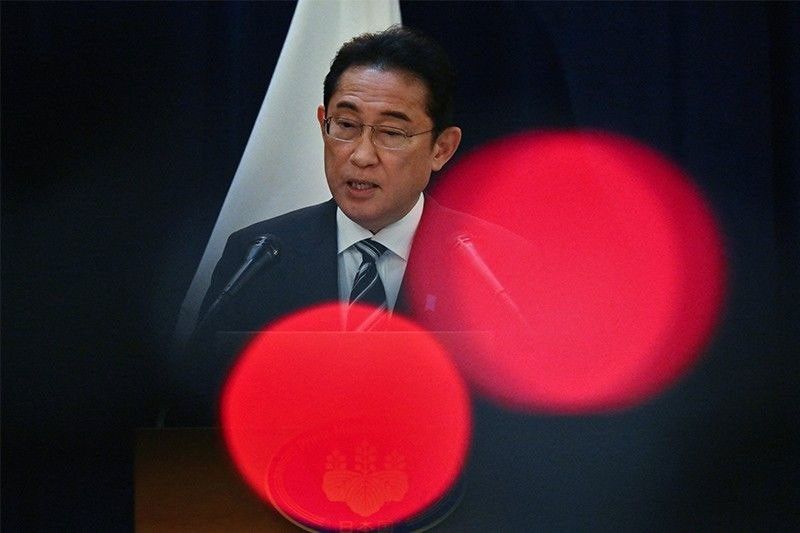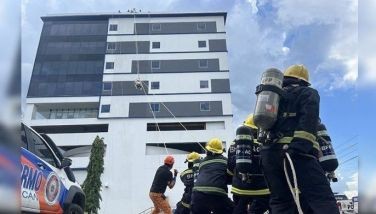What we can learn from Japan


Prime Minister Kishida of Japan said, on the occasion of his State Visit last week, that the Philippines and Japan have an excellent relationship today. He described it as a “golden age.”
Through the decades. Indeed, through the decades since the 1960s, each visiting prime minister from Japan has helped to create a warming between our two countries.
The diplomacy between the two countries fostered stronger economic ties as time went on. The growth of economic relations was facilitated by the payment of war reparations undertaken as long term payments of goods and services.
After that phase of relations, Japan continued to help us in terms of official development assistance. Their economic assistance program also help to stimulate their own economy.
These relations expand the growth of trade between the two countries, too. By the 1970s and later on, the volume of two-way-trade had become significant, rivaling that of our trade with the United States. This has also induced the flow of investments by private Japanese companies in various sectors of the economy.
The two-way trade with Japan had reached at one point one-fifth of Philippine overall trade with all countries as we moved toward the early years of 2000s. This trend was later partly eclipsed by the rise of trade between the Philippines and China.
Japan’s share continues to be very significant, but has been displaced by China in terms of trade volume with us and also the rise of trade volume with ASEAN.
The Philippines was one of the earliest beneficiaries of inflows from growing Japanese foreign investments in their early post-war expansion. Japanese foreign direct investments have been a significant presence in the Philippine economic industrial scene. As I have explained in an earlier Crossroads column (of Feb. 22, 2023), other ASEAN countries have exceeded us in welcoming Japanese manufacturing foreign direct investments.
Since the 1970s, Japan has become the country’s biggest source of bilateral development assistance for the Philippines. The Philippines continues to be heavily dependent on economic development assistance from the multilateral development agencies and from countries with strong development assistance programs.
Japan’s official development assistance has continued to play a pivotal role in the country’s development program, especially in infrastructure investments. In the past, Japan had been instrumental in the financing of the country’s road infrastructure. In the present context, it is helping in the construction of the subway project in Metro Manila. It is also active in support of construction of railway systems in other parts of the country, especially in Mindanao.
We can only get a sense of the overall magnitude of this aid because we are used to understanding the value of aid in terms of US dollars. Moreover, we service our yen debt using the US dollar. Japanese official development assistance is denominated in yen, but the exchange rate fluctuates. (For instance, when the yen depreciates relative to the US, the value of yen loan increases.)
From 1985 to 2017, the volume of development loans from Japan amounted to $15.818 billion; grants and technical assistance amounted to $0.864 billion. Before 1985 (during the period 1961 to 1985), total disbursements of ODA involving grants and loans amounted to $7,640.85 billion. (These data are based on a study of Japanese aid background study.)
During the former Duterte administration up to May 2022, development assistance from Japan was $7,947 billion (but this was in terms of a much depreciated yen; it is from a separate source.)
What we can learn from Japan. There are many things we can learn from Japan’s growth story.
Japan was the first country to rise in Asia from the ashes of the Second World War. As a defeated country in that war, its level of disruption and destruction was devastating.
Under a reformed constitution that denounced militarism, Japan changed its political structure as a result of the Allied Occupation at the end of the war. The Emperor, who remained a symbol of the state, became a constitutional monarchy. The government was chosen by a popularly elected parliament (Diet) under a party system. The leaders of the government led the country to a path of economic growth.
First, it rebuilt the national economy. Relying mainly on the prodigious capacity for sacrifice of a defeated nation, the country devoted its resources (human capital, technology, and saving) to develop an economy that produced for world markets. It succeeded in rapidly rebuilding Japan, so that by 1964, it could sponsor the Olympics, the first in Asia.
Many economies in East Asia patterned their own paths by following Japan’s growth, assisted by a policy of access to world capital markets.
Exemplary growth in South Korea and Taiwan are examples. Other countries in South East Asia followed Japan’s course. Malaysia, in particular, looked to Japan as a model for its growth.
My impressions of Japan. I have visited Japan through the years countless times.
But just two weeks ago, I was on a personal visit to Japan – not in Tokyo – but in two cities, Nagoya and Kyoto, and also to a few very rural towns and to seldom-visited mountain trekking sites not travelled by common tourists.
I was highly impressed again by the scenes of life that I had encountered. Japan is a highly modern country that is very steeped in its cultural traditions. It is today a high-income economy, very rich in public goods. Its museums of science and technology are a wonder of learning for the people. Its public parks are well-cared gardens for people to enjoy.
Japan’s modernity is at the edge of the scientific and technological frontier, while it holds attachment to its unique cultural traditions. The cities have their modern transport network that is home to bicycles, motor vehicles, trains, super-trains, and other transport means. The visitor in the urban areas will experience the lively city centered on the train station and the airports as axes for arrivals and departures. The city centers are full of eye-catching modern buildings. The city at night is lively and bright.
I will write about these in the future.
For archives of previous Crossroads essays, go to: https://www.philstar.com/authors/1336383/gerardo-p-sicat. Visit this site for more information, feedback and commentary: http://econ.upd.edu.ph/gpsicat/
- Latest
- Trending


























